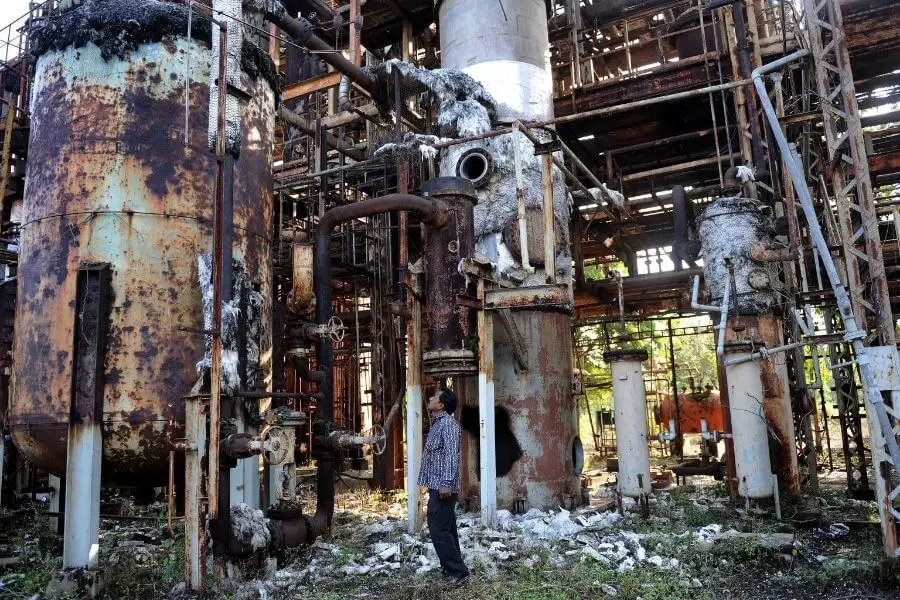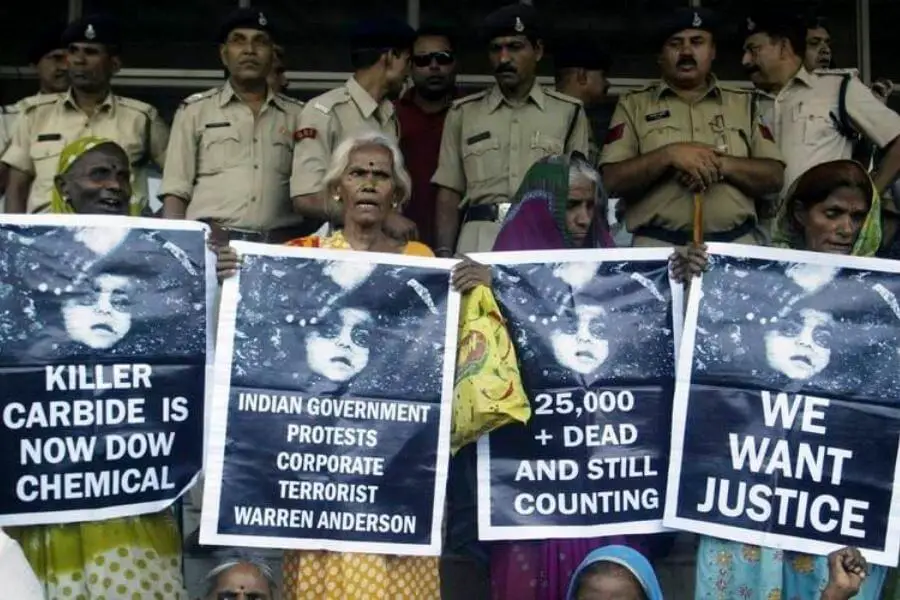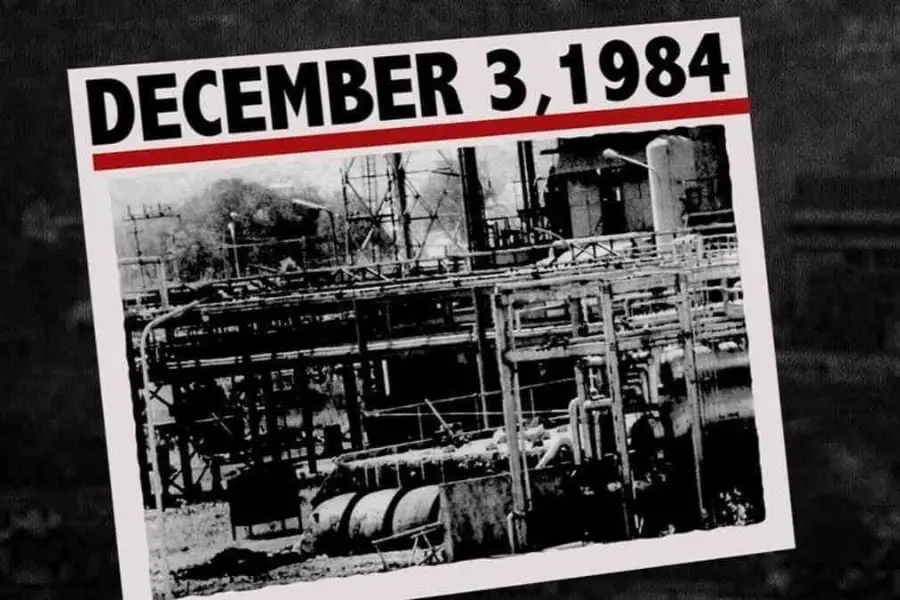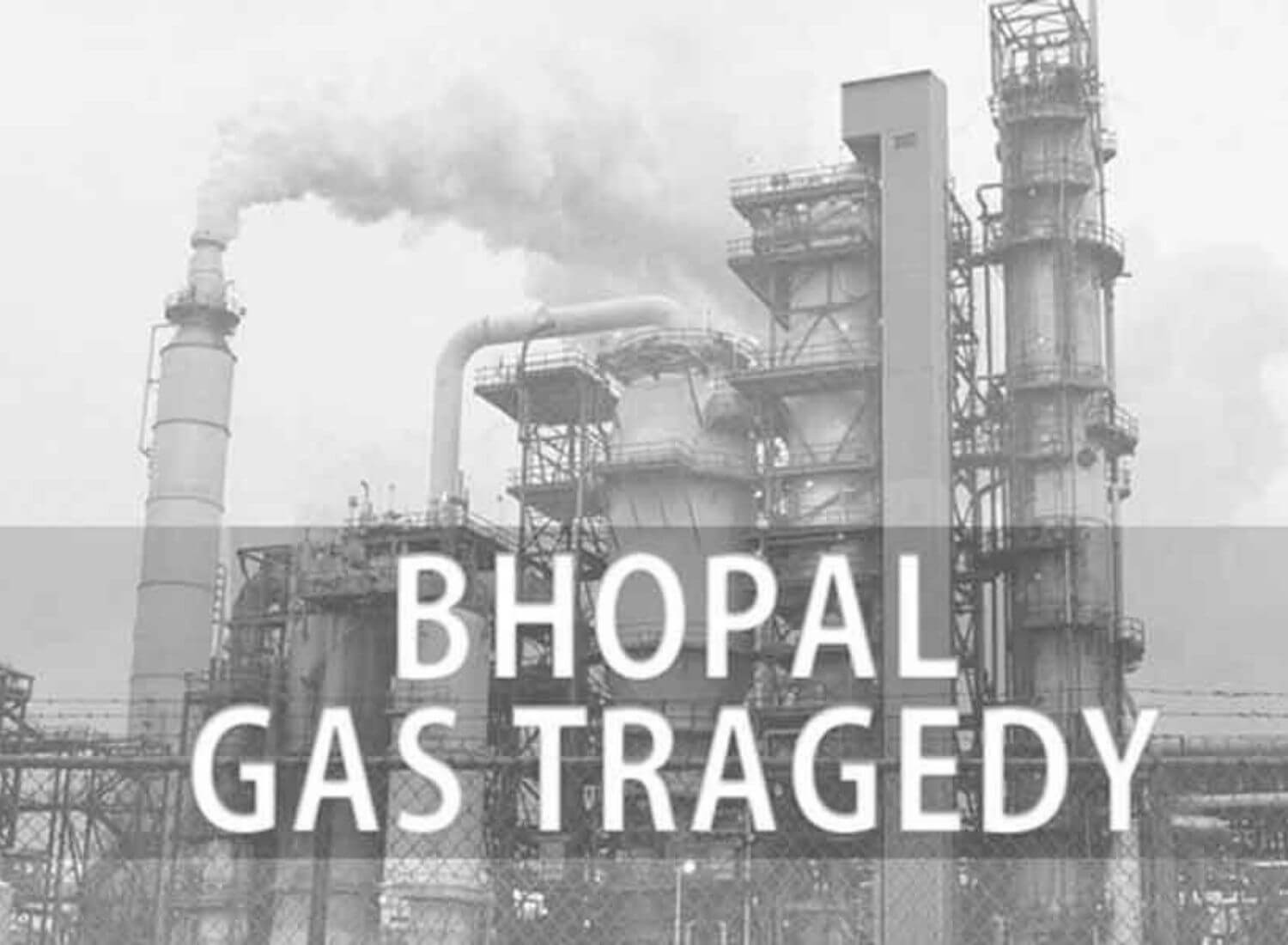Ever wondered how dark can a night truly turn out to be? A night of tragedies and chilling incidents. Such a night was experienced by the people of Bhopal around 36 years back from 2nd to 3rd December night in 1984 and is known as the Bhopal Gas Tragedy, considered the world’s worst industrial disaster by The Atlantic. The night took the lives of more than 10,000, and others carried the remains of the catastrophe in their blood, with figures estimated to be more than 2,00,000.
However, the figures shown by official sites have been claimed to be less severe by many pieces of research. Apart from that, several theories evolved out of the methyl isocyanate gas (MIC) released in the Bhopal city, making it a city of the dead.
The Reason Behind The Bhopal Gas Tragedy

The unquestioned reason behind the cause of the incident is that a half-ton of water got in one of the three tanks that carried methyl isocyanate (MIC) used for making carbaryl pesticides. It led to a runaway exothermic reaction because of the raised temperature and pressure in the tank.
This reaction would further cause the iron particles to break off and mix with the chemicals present on the inside resulting in another violent reaction. It caused the toxic gas to release into the atmosphere, passing all the devices installed for safety.
Is The Theory Of Sabotage True?

Union Carbide India Limited (UCIL) pesticide plant, where the gas leak had occurred, has been talking about the sabotage theory whenever questioned about the Bhopal Gas Tragedy. According to this theory, the company claims that it was caused deliberately by an unidentified employee. The company could not prove the theory. However, the theory is largely criticized by the Indian Government and the officers assigned for investigation.
The Union Carbide, based on this theory, had repeatedly argued to wash their hands from financial responsibility, which had been expensive on each life of the victim. The company had also placed their suspicion over an employee on a plant operator on night duty. Further, it argued he might have caused it as he was unhappy with the company repositioning him to a separate part of the plant. The company also stated that the employee thought that the gas would cause harm to the plant but instead led to catastrophe.
The company also stated that their logs were observed to be tampered with for the same reason, and the planning was conducted even before. The company had given a basis of the theory that a pressure gauge was missing on the night of the disaster. In a nutshell, the theory tells that an unidentified employee went to the storage area during the shift change and connected the rubber hose with the tank’s water tap while removing the pressure gauge.
According to research, this theory has been stated to be proposed initially by Arthur D. Little but had failed to resolve the case. Further, when the theory was proposed in an international seminar, it had witnessed criticism by experts along with a safety specialist with the World Bank, who expressed shock on hearing the theory.
Earlier Leaks Showing People Were Living On The Edge Of A Volcano
There were several incidences recorded even before the catastrophe that gave significant signals of such an incident. The incidents include the 1976 pollution complaint within the plant by two local trade unions. A worker in 1981 got splashed with phosgene, and in a panic, he removed his face mask, inhaling a large amount of the gas while carrying out maintenance work. The next was the phosgene leak that happened in 1982, exposing 24 workers under it, and the MIC leak in the same year affecting 18 workers.
The same year also witnessed an incident that happened with a chemical engineer who came into contact with MIC resulting in burns to 30% of his body and another MIC gas leak. The leak also led to major burns to two other workers and a MIC supervisor, and similar leaks were experienced during the period between 1983 and 1984. The tiny gas leaks were also drawn as one of the reasons behind workers’ casual attitude as they were accustomed to such gas leaks and delayed the situation after the tea break.
The Negligence Showed By The Company

Another theory about the Bhopal Gas Tragedy draws attention to the negligence shown by companies in providing proper safety measures. It included the filling of MIC tanks above the safety levels. Many records support the fact that when the leakage of gas was reported, the public siren was made to switch off within a few times of its ringing. The siren was switched off based on the company’s procedure for not alerting the public on tiny leaks. However, it went off until it became a serious issue and had affected many.
The hospital staff has reported a gas but not MIC (methyl isocyanate), which confused the staff. The MIC refrigeration tank was also idle previously for saving cost, which otherwise would have been used for preventing the gas leak. The safety devices were undersized according to the Government investigation. There were many other major flaws like reduced safety management, shortage of skilled operators, and inadequate emergency action plans for such an incident.
Other issues were drawn out from underinvestment by companies for quality in the plant. For example, the employees had stated if there is a leak in the pipe, the company discouraged changing it and did not look after proper training given to the workers.
The next thing was that the workers were forced to use manuals written in the English language, and promotions were stopped, resulting in several skilled workers going elsewhere. The alarms of MIC tanks were not working for the past four years and were relying only on one manual backup system. The gas scrubber and the vent towers were out of service, which would have otherwise stopped the incident.
The steam boiler was non-operational, and the MIC was kept at 20 degrees, whereas the temperature should have been 4.5 degrees. According to this theory, cleaning was done by the workers at that time, which had diverted the water flow because of a series of clogging and leaking incidents due to improper maintenance. The scientists also suggested that the defectively designed vent-gas scrubber would have resulted in a back-flow resulting in additional water transferred into the tank.
Apart from these, many other theories have drawn out that the Bhopal Gas tragedy was an experiment done on people, and there is a book dealing with the same.
